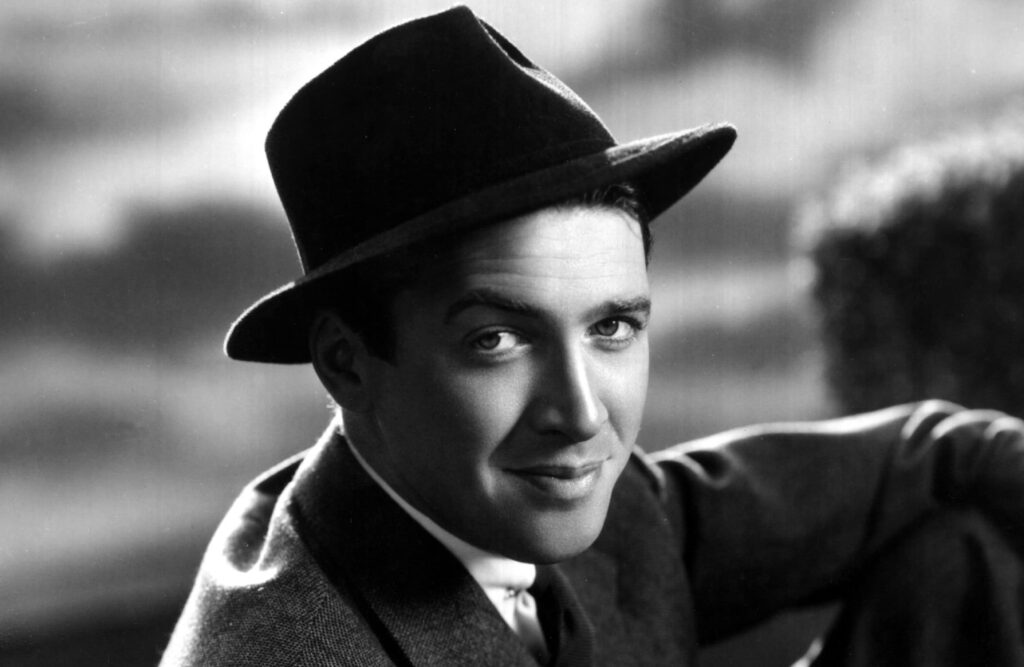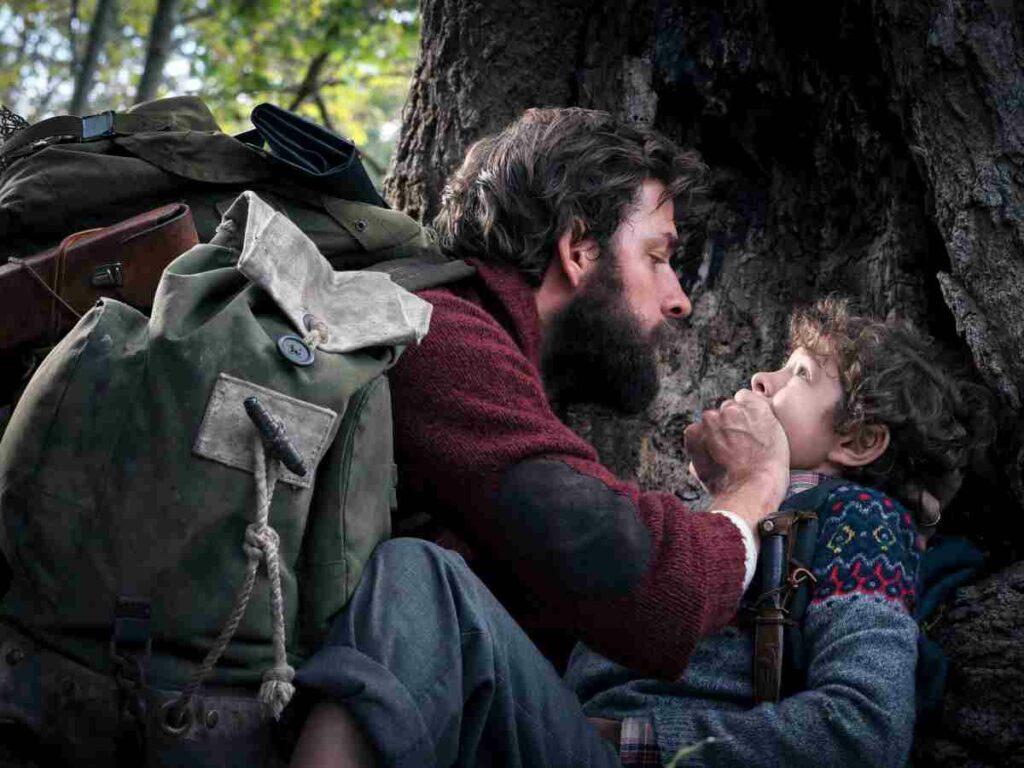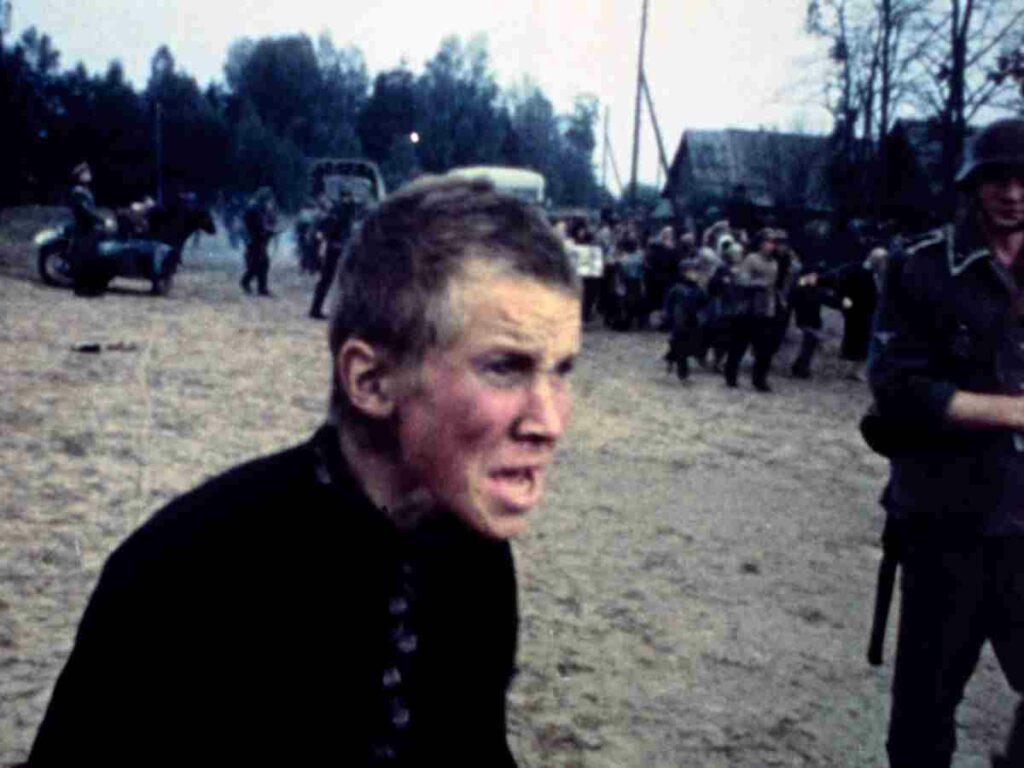In The Toast series today, we celebrate the wonderful life of one of America’s greatest acting legends ever to grace the screen. Born on this day in 1908, the lovable, everyman James Stewart enthralled moviegoers across an incredibly wide filmography, over an illustrious career spanning almost 60 years.
Eyes bulging, transfixed on the world far below, he clung to the rooftop for dear life. Everything was becoming fuzzy. Down was up and up was down. He quickly surmised that the fear might actually be worse than the fall. Both equaled death. But the fear. That heart-racing fear. How many more seconds could he hold on? White-knuckled, stone-petrified, his sanity was all but lost. He was momentarily frozen in time.
Does that sound like the lovable, everyman James Stewart? Definitely not. And that’s why audiences loved James Stewart. The Alfred Hitchcock masterpiece Vertigo was released in June 1958 — and for over 60 years since, this mysterious movie, alongside its brilliant star James Stewart, has confounded critics and audiences alike. In Vertigo, Stewart expertly surpasses the success of his previous Alfred Hitchcock roles. Some might’ve loved him in Rear Window (1954) and The Man Who Knew Too Much (1956). But back to that Vertigo role – and all its phobic moodiness, colorful obsession, and moral question marks. Stewart profoundly rocked — just like legendary Elvis Presley did back in those rock ‘n roll 1950s.
In Vertigo, Stewart defied his ‘squeaky clean’ reputation. Little known factoid — he was not unlike oft-described ‘lovely, demure’ Deborah Kerr who surprisingly pursued the lead role of ‘sultry, adulterous’ Karen Holmes in the legendary From Here to Eternity in 1953. The result for Ms. Kerr?
An Academy Award nomination. Respect and cheers from around the world. And even better — an influx of juicy, meaty scripts keeping her busy for years to come.
Sometimes it pays off to take artistic risks. There’s something supremely wonderful about watching an actor successfully defy his former roles. James Stewart did that in Vertigo. He was pure magic.
A Western Pennsylvania Boy
James Stewart (aka Jimmy Stewart) was a Rust Belt boy, born on May 20, 1908, in Indiana, Pennsylvania. Back then, the coal mining industry was hopping, and small dirt-road neighborhoods hummed alongside cozy bell-stop trolleys. Houses were popping up everywhere, and Jimmy’s father owned a simple neighborhood hardware store. It all seemed idyllic, serene. Almost like a Norman Rockwell painting.
Jimmy grew up not too far from the future-illustrious Clark Gable. Though not a stone’s throw away, the relative proximity of these two future stars is still delectable food for Hollywood thought. In Jimmy’s case, his hometown and his renowned friendly Midwestern culture also provide helpful insight into Jimmy’s Hollywood persona. Off-screen, Jimmy always came off as down-to-earth, and he had a ‘fish out of Hollywood water’ mystique.
Not only did this ‘ordinary’ quality make Jimmy perfect to play certain roles, but it also endeared him to movie goers. Who else could’ve played George Bailey in It’s A Wonderful Life (1946)? Ranked #11 on the AFI’s Greatest Movies List released in 1998, and arguably the most beloved Christmas movie of all time, It’s a Wonderful Life tells the tale of a long-suffering suicidal man who never leaves his hometown. Though he has a magnificent wife and beautiful children who he loves, he still can’t shake his feelings of failure — for never getting out and doing more, for never making a more profound societal contribution. However, a Christmas angel bestows upon George Bailey a great gift — what would the world have been like without George Bailey in it?
A Wonderful Life
This ordinary, small-town man gets to see his hometown, and his loved ones, in an alternate reality without him. Awesomely powerful in showcasing a state of utter degradation, the dream sequence of It’s a Wonderful Life is chilling. It’s revealed that Bailey’s life doesn’t just matter, but it’s invaluably precious. And positive. Bailey snaps out of his death wish then and there — a true miracle.
Only an actor like Jimmy Stewart could capture the deep pain and subsequent hopefulness of this ordinary man. Running through the small main street of fictitious Bedford Falls on a chilly, snowy Christmas – George Bailey is exuberant in his newfound hope and love of life. Incidentally, this is classic black and white old movie heaven! The audience is laughing, cheering, and crying right beside lovable George Bailey. The charming, heartfelt innocence of an old movie!
And to movie goers, this breathtaking scene is what Jimmy Stewart is all about. It symbolizes him perfectly — in a shiny golden Hollywood nutshell. He was exemplary in playing a human just like us — someone just trying to make it through today, tomorrow, and next week. No one was better at the everyman than James Stewart.
But what about his other brilliantly ‘ordinary’ roles? A long career spanning the 1930s to 1990s, Stewart has a vast filmography. But possibly more important than his ‘ordinary’ roles are his ‘vanguard’ films. He won an Academy Award for his role as journalist Mike Connor in 1940’s The Philadelphia Story – one of cinema’s first rom-coms.
The Philadelphia Story
Though 1934’s It Happened One Night is unquestionably Hollywood’s first truly successful romantic comedy (the first film to win the coveted “Big 5” at the Academy Awards – Best Picture, Director, Screenplay, Actor, and Actress), The Philadelphia Story has a fresh, modern appeal that still makes it popular today. Even in 2021, it’s still surprisingly relatable.
In The Philadelphia Story, Stewart transforms his character from a sloping reporter reluctantly covering a socialite’s upcoming wedding (character Tracy Lord, played by the one and only Katharine Hepburn), to a handsome, hot-blooded suitor of Tracy Lord. Before we know it, these two are dancing poolside in the moonlight. Hiccup! And they’ve both downed some bubbly. Will Tracy move forward in marrying her fiancé the next day, or instead run off with her new journalist love? Further shenanigans ensue, and its’ ‘all’s well that ends well’ in this fun, frothy flick.
One is rightly reminded of millennial rom-com plot lines here, and this ‘connect the dots’ revelation is rewarding. The Philadelphia Story is one of the original defining movies of the rom-com genre. Thank you, The Philadelphia Story, for making hilarious movies like Wedding Crashers (2005) and How to Lose a Guy in 10 Days (2003) possible.
Stewart’s penchant for the ‘vanguard’ continued throughout his career. He was one of iconic director Alfred Hitchcock’s faves – starring for him in a handful of thrillers, such as Vertigo and Rear Window. These movies, similar to how The Philadelphia Story created rom-com, helped lay the blueprint for the modern ‘thriller’ genre.
A Favourite With Directors
Further, according to respected BFI’s (British Film Institute’s) Sight & Sound poll in 2012, Vertigo even dethroned the kingly Citizen Kane (1941) from its long-established moniker of ‘Best Movie.’ Stewart was integral to Vertigo’s success. Some might say it was the peak of his career. But don’t look down – for fear of vertigo!
Stewart was also a fave of iconic Western director John Ford. Movies like How the West Was Won (1962) and The Man Who Shot Liberty Valance (1962) are considered American treasures. In the latter, Stewart’s portrayal of good-guy attorney Ransom Stoddard is ‘classic Jimmy.’
After being physically beaten and robbed by outlaw Liberty Valance (played fearsomely well by Lee Marvin), Ransom stays on and builds a life in this 1800s western frontier town. He becomes a dish-washer, opens an impromptu school to help the townsfolk learn to read and write, and his goodness shines through for all to see — his admirers eventually electing him senator. Starring alongside John Wayne (the irrefutable king of Westerns), Stewart plays an excellent foil to Wayne’s character. These two characters are so different, and because of Stewart and Wayne, so interesting to watch. They’re two master actors at play — a gratifying experience for the audience.
A five-time Academy Award nominee (and one-time winner), Stewart earned his final nominee for 1959’s Anatomy of a Murder. Known for its unflinching, accurate portrayal of a court trial, and directed by daring powerhouse Otto Preminger, Stewart proved his progressiveness again. The film helped shape the genre of ‘true crime’ film for decades to come. True crime films from the 1980s, ‘90s, and beyond can thank Anatomy of a Murder for its bold ambition, and the trust it places in its audience.
The Goodness Of Stewart
Anatomy of a Murder takes its time, and so too does Jimmy Stewart. This movie builds and breaks, obscures and reveals. One can imagine that only a beloved actor like Jimmy Stewart could keep a 1959 audience engrossed for so long, and confident in the importance of his protagonist’s story.
Stewart passed away in 1997, but his wondrously positive cinematic spirit is still ubiquitous. It’s everywhere, and this isn’t even to speak of his wondrously positive contribution to the USA during World War II. He put his blossoming Hollywood career on hold in order to serve in the Army Air Corps. A small-town boy from Pennsylvania, he grew to be a Hollywood movie star, and then some. Ranked #3 on the AFI’s list of ‘greatest American screen legends,’ which was compiled in 1999, he epitomized a goodness in character that is truly mythical and memorable.
Happy Birthday, dear Jimmy Stewart.
Catch all the stories from our The Toast series here.




